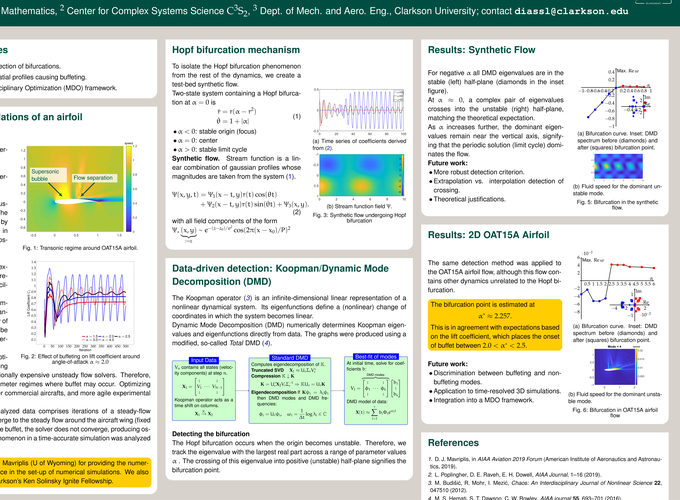

The Dynamic Mode Decomposition (DMD) algorithm was first introduced in the fluid mechanics community for analyzing the behavior of nonlinear systems. DMD processes empirical data and produces approximations of eigenvalues and eigenvectors (“DMD modes”) of the linear Koopman operator that represents the nonlinear dynamics. In fluid dynamics, this approach has been used to both analyze constituent flow patterns in complex flows, and to design control and sensing strategies. In this work, we focus on predicting the transition to buffeting of a 2D airfoil in a transonic regime. Buffeting is a vibration that occurs as the angle-of-attack increases and the interactions between the shock and flow separation induce limit-cycle oscillations. We demonstrate that this bifurcation can be anticipated by monitoring the spectrum computed by DMD as a subset of eigenvalues becomes unstable. We evaluate the performance of our approach on a synthetic Hopf-bifurcation flow, and on both pseudo-time and time-resolved simulations of a standard 2D airfoil.